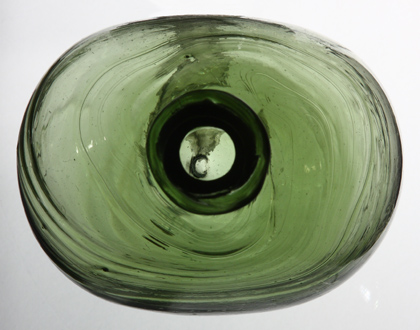An accidental beauty
A simple 7 1/2" tall chestnut-shaped blown bottle shows that an object's glass itself can make the object stand out from the crowd.
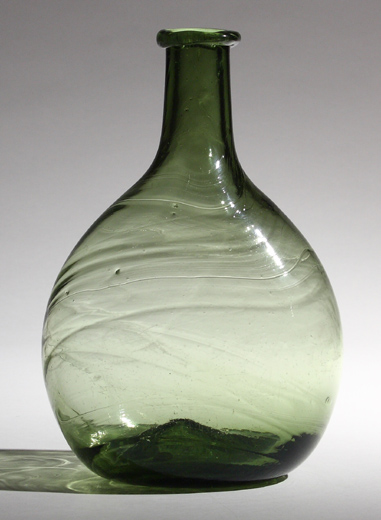
Little more than elongated bubbles slightly flattened into a characteristic chestnut shape and with an applied string lip, bottles such as this were a staple of bottle manufacturers in America from the late 18th Century until mold forming took over in the 1820s and 1830s. The form continued to be made as glassblowers moved west to the new lands of Western Pennsylvania and northern Ohio.
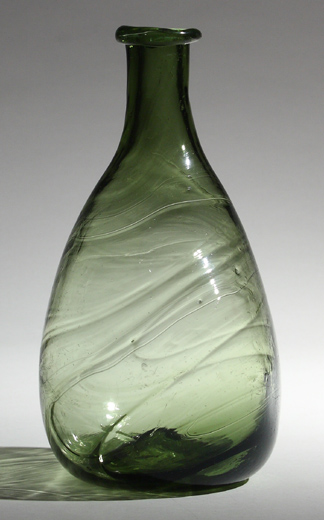
Glass took control here in two ways: color and decoration.
The rare "citron" color was one of many that emerged in a factory that produced containers with little regard to uniformity or quality control. Varying proportions of the two iron oxides—ferrous and ferric—led to colors from aquamarines through greens and yellows to ambers. The exact proportions in any given batch were accidental—the impurities that happened to be present in the day's raw materials—leading to a surprise color for each day's products.
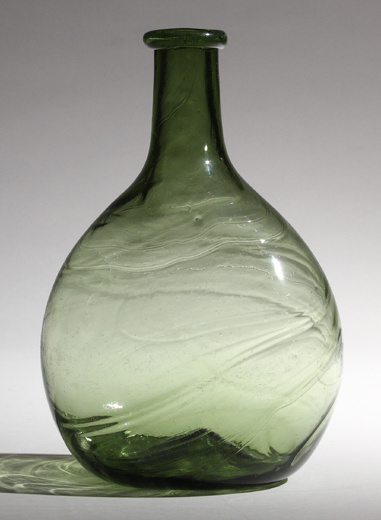
Unlike regimented swirled ribbing created using a pattern mold, these swirls are the result of uneven heating of the batch. Striations were present as the glass was picked up from the pot. They spread out across the bubble as it was enlarged and shaped by the blower. The depth and quantity of striations varied from gather to gather, bottle to bottle.
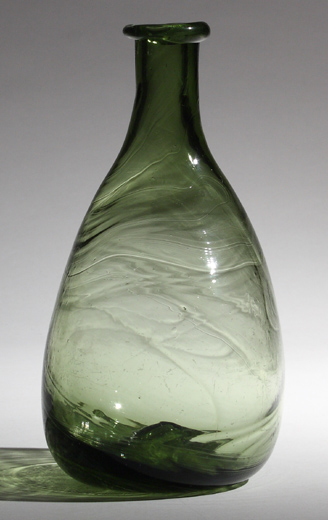
As such, this flask is more a found object than a creation. It is like a pebble picked up on a beach because of its form, color and markings. It is treasured because it stands out. It is an accidental beauty.
